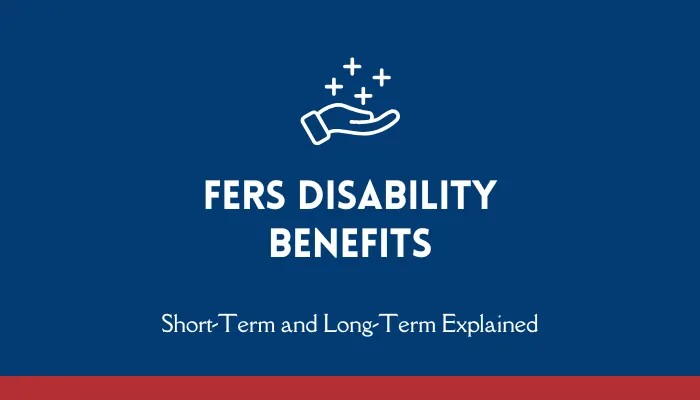INSIDE YOUR FERS BENEFITS

FERS Disability Benefits: Short-Term and Long-Term Explained
FERS Disability Benefits: Short-Term and Long-Term Explained
Your Safety Net Is Only as Strong as Your Strategy
When Tasha, a 41-year-old USPS supervisor, tore her rotator cuff, she assumed she'd be back in a few weeks. But her surgery led to complications. Six months later, she was still out—and her paid leave had run dry. She didn’t realize how limited her options were… until she called me in tears.
May is Disability Insurance Awareness Month, which makes it the perfect time to understand what FERS disability benefits actually cover—and where they don’t.
What Are FERS Disability Benefits?
The FERS system doesn't offer traditional short-term disability insurance. Instead, it relies on a patchwork:
Sick leave and annual leave
Leave without pay (LWOP)
OPM Disability Retirement for long-term situations
Possibly Social Security Disability Insurance (SSDI)
So how do you plan for the unexpected?
Short-Term Disability: What FERS Employees Should Know
New to federal service—or been around but still don’t have short-term disability? Don’t wait. Protect your paycheck before life throws a curveball.
We’ve got plans that cover you on and off the job, so if an illness or injury keeps you from working—even short-term—you’re still bringing in income.
But if you don’t have your short term plan in place, here are your options:
Use Sick Leave First
Most feds accrue 4 hours per pay period = 13 days/year.
Once it’s gone, you can tap into annual leave.
Then Consider LWOP
You’ll still have your job—but no paycheck.
You’ll owe health insurance premiums directly if unpaid for too long.
Buy Private Short-Term Disability Coverage
This is a supplement plan that can be paid with payroll allotment to make it easy.
But it can cover 60–70% of your income while you recover.
You won’t be able to use a new plan for a current injury, but it will help you in the future should another injury happen. (and unfortunately they do happen)
💡 Think of your benefits like a quilt—not every square is filled. You have to stitch in extra coverage yourself.
Long-Term FERS Disability Benefits: How OPM Disability Retirement Works
If your disability is expected to last at least one year, and you can no longer perform your job duties:
You May Qualify for FERS Disability Retirement
Must have 18 months of federal service
Disability must be expected to last 12+ months
OPM must determine that you can’t perform your current job and no suitable accommodations exist.
Social Security Disability Insurance
In order to apply for SSDI, you can’t be working, so typically, they day you stop working per doctor's orders, you can then apply for SSDI
Dual approval is common, but SSDI approval can take longer, 6-9 months
What You’ll Get from the FERS Disability:
Year 1: 60% of your “high-3” salary minus any SSDI
Year 2 and beyond: 40% of your “high-3” minus SSDI
Benefits continue until recovery, age 62, or a conversion to regular FERS retirement
Planning Ahead: What You Can Do Right Now
Don't wait until you're hurt to prepare. Here's how to build a disability plan:
✅ Check your leave balances and create a buffer
✅ Evaluate your TSP and other income sources
✅ Explore private disability coverage (think of the 🐥 duck)
✅ Understand your eligibility for FERS disability retirement
✅ Talk to a federal benefits specialist (yep, that’s me!)
📊 Case Study: A 55-year-old federal IT worker with $95K salary qualified for $38K/year through FERS disability retirement after a cancer diagnosis. Because he also had an individual policy, he received another $18K/year—enough to cover his mortgage and keep his health benefits.
FERS Disability Benefits Don’t Automatically Kick In
You have to apply, document, and advocate for yourself. Most people wait too long or don’t know what they’re entitled to or what the process is. Don’t let that be you.
📲 Let’s Chat:
Want personalized guidance?
Text me at 813-686-2208 or head over to JustCallMelinda.com. I’ll help you build a plan that protects your income—now and in the long run.

